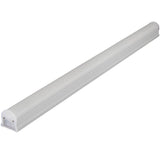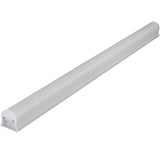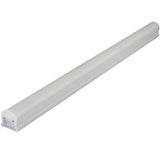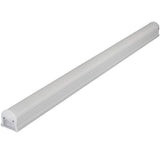Consider Maintenance & Lighting Needs for Retrofits
Posted by Nick on for ProLampSales
When it comes to lighting retrofits, we often get focused on utility rebates and energy savings to the exclusion of all other issues. If the energy company is offering $10 per bulb and $20 per fixture, it seems like a no-brainer to go ahead with a complete retrofit, right?
Rebates and energy savings don't tell the entire story, however. They are an important selling point to replacing older, inefficient lighting technology with newer LEDs, but a simple one-to-one replacement might not be what an office, manufacturing floor, or residential property really needs.
Let's take a look at two overlooked yet important questions to ask when evaluating a lighting retrofit.
Maintenance Issues
In large buildings, the maintenance budget required to replace light bulbs can be huge. Even worse, while the cost of replacement bulbs can be accurately measured, the labor costs in "ladder time" may be completely unmeasurable for small, overworked accounting departments.
Hotels, to take one example, can have dozens of floors and hundreds of rooms just for the occupants, let alone areas used strictly by staff. With lights on 24 hours per day in some areas, incandescent and halogen bulbs are almost non-starters in larger buildings, and even CFLs will burn out sooner than LED lamps.
For industrial settings, "ladder time" may not involve one guy on a step ladder, but a whole team of workers and specialized equipment to get to the high bay fixtures thirty feet from the ground. If there is an option to reduce these costs with lighting that lasts longer, then the company has an opportunity to shift resources into more effective channels.
Lighting Needs
Replacing 40 watt incandescent bulbs with a 40 watt equivalent LED looks great on paper: a 6-7 watt LED can provide the light output of a 40 watt incandescent.
No brainer. Make the change. Right?
Well, not so fast.
While replacing bulbs based on wattage, equivalent watts, or even lumens is a good approach, it's better to take a step back and evaluate the lighting needs of an area first. The time a company is considering upgrading to CFL or LED to get energy savings and utility rebates is also the time to determine whether certain areas need more or less light.
There's both an art and science behind the lighting design process, which is beyond the scope of this article. However, workers are often the first to know if there is not enough light in their offices or work areas and will be vocal about the need for better lighting if asked.
Bottom line: don't let your workers sit in an office with two of the four fixtures completely out, while one of the remaining two flickers all day. Ask employees if the lighting in their office, the warehouse, or the lobby is good enough. And don't be afraid to ask restaurant and hotel patrons if the lighting quality and quantity met their expectations of could be improved.
Rebates and energy savings will always be the bread and butter of lighting retrofits, since they directly impact the bottom line and can result in faster paybacks for money spent on new lights or fixtures. Maintenance costs are often a hidden cost for older tech, and a hidden benefit for making the switch to more efficient lighting, but smart companies will evaluate their lighting needs when considering upgrading the lights in a group relamping project.
- Posted in Energy Efficiency, Retrofits
Featured Products (View All)
0 Comments




